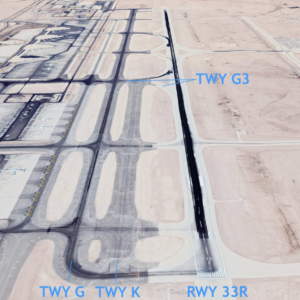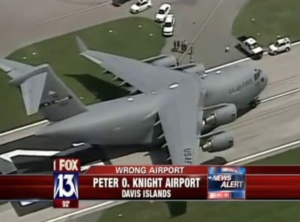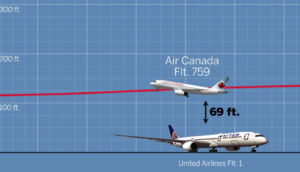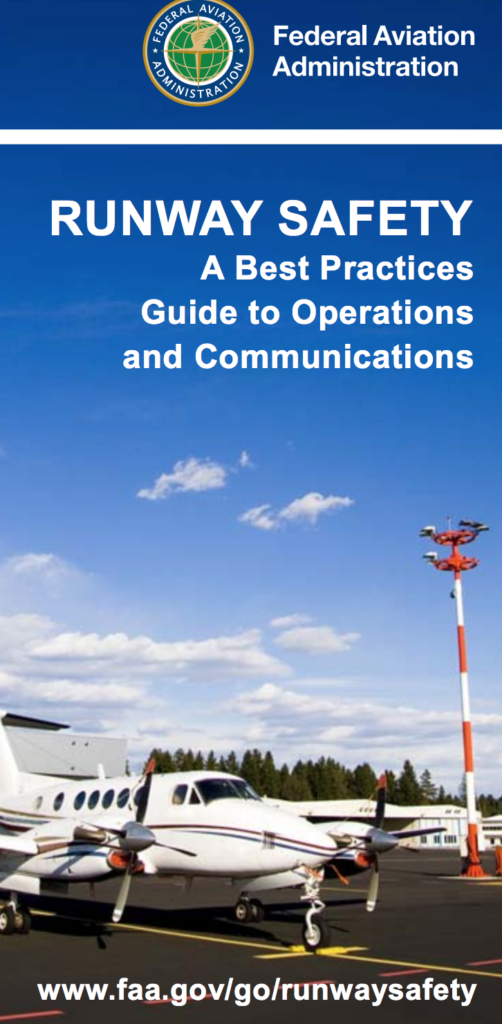
It’s happened again.
Around midnight on a perfectly clear night last week in Riyadh, a Jet Airways 737 tried to take off on a taxiway. The crew mistaking a new taxiway for a runway!
The crew, with thousands of hours experience, took off on a surface that didn’t have runway markings or runway lights. Thankfully no one was seriously hurt. It’s too early to exactly say why this happened, but it’s clear that some sort of “expectation bias” was a factor. Expecting to make the first left turn onto the runway. One has to ask – was ATC monitoring the take off?
After the tragic Singapore 747 accident in Taipei, technology was developed to audibly notify crew if they were about to depart “ON TAXIWAY”. This is known as the Runway Awareness and Advisory System (RAAS).
Sadly the Riyadh incident is not isolated. There have been a plethora of near misses in the past few years (more details in Extra Reading below).
 There have also been more than a few “incidents” of aircraft from C17’s to 747s landing at the wrong airports! The most notable near miss recently was that of an Air Canada A320 nearly landing on a taxiway full of aircraft at KSFO/San Francisco. But it’s happened to Delta and Alaskan Air recently too.
There have also been more than a few “incidents” of aircraft from C17’s to 747s landing at the wrong airports! The most notable near miss recently was that of an Air Canada A320 nearly landing on a taxiway full of aircraft at KSFO/San Francisco. But it’s happened to Delta and Alaskan Air recently too.
It is an even bigger issue at a General Aviation level (and not just because Harrison Ford did it!). The FAA safety team recently noted;
The FAA Air Traffic Organization (ATO) has advised of an increase in, “Wrong Surface Landing Incidents” in the National Airspace System (NAS).
Incidents include:

- Landing on a runway other than the one specified in the ATC clearance (frequently after the pilot provides a correct read back)
- Landing on a Taxiway
- Lining up with the wrong runway or with a taxiway during approach
- Landing at the wrong airport
The FAA published some shocking statistics:
- 557 “wrong surface landing/approach events” between 2016-2018. That’s one every other day!
- 89% occurred during daylight hours
- 91% occurred with a visibility of 3 statue miles or greater
So what to do?
There are numerous ‘best operating practices’ pilots can use to help avoid such incidents.
- Be prepared! Preflight planning should include familiarization with destination and alternate airports to include airport location, runway layout, NOTAMs, weather conditions (to include anticipated landing runway)
- Reduce cockpit distractions during approach and landing phase of flight.
- Use visual cues such as verifying right versus left runways; runway magnetic orientation; known landmarks versus the location of the airport or runway
- Be on the lookout for “Expectation Bias” If approaching a familiar airport, ATC might clear you for a different approach or landing runway. Be careful not to fall back on your past experiences. Verify!
- Always include the assigned landing runway and your call sign in the read back to a landing clearance
- Utilize navigation equipment such as Localizer/GPS (if available) to verify proper runway alignment
It’s worth spending a few minutes watching this.
Extra Reading
- Finnair A340 taxiway rejected take off Hong Kong
- Portugal ERJ-190 taxiway rejected take off Nice
- KLM B733 taxiway take off Amsterdam
- Schaheen Air B734 taxiway take off Sharjah
- Eva Air MD11 taxiway take off Anchorage
- Etihad A330 lined up on runway edge Abu Dhabi – rejected take off
More on the topic:
- More: US Shutdown Ends and FAA Lifts Flight Restrictions
- More: Updated FAA Oceanic Guides
- More: FAA Housekeeping: Foreign Instrument Procedures, Approach Chart Clutter
- More: FAA License Holders Abroad – You’ll Need A US Address Soon
- More: Visual Approaches: When To Say No
More reading:
- Latest: More face scans at the US border: BizAv now included
- Latest: Mexico Customs Surprises: Pills, Vapes, and Laptop Rules
- Latest: Greenland NAT Alternates: Dec 2025 Update
- Safe Airspace: Risk Database
- Weekly Ops Bulletin: Subscribe
- Membership plans: Why join OPSGROUP?












 Get the famous weekly
Get the famous weekly 





